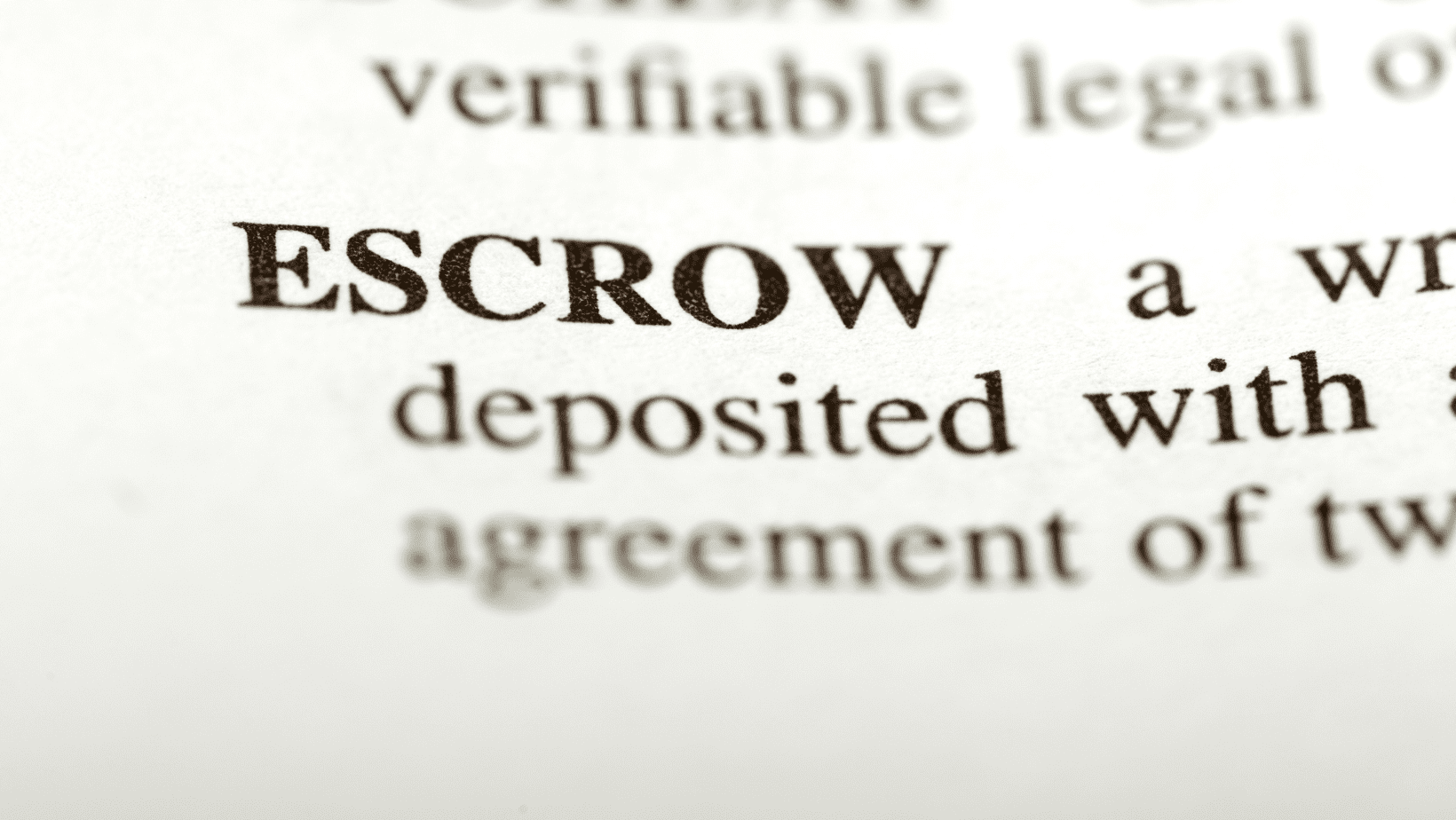
When considering the obligations of a mortgage, principal and interest repayment aren’t the only costs to consider. You’ll need to pay annual real estate property taxes and homeowners insurance, likely through an escrow account as part of your monthly payment to your mortgage lender.
Understanding Escrow Accounts
An escrow account is a savings account set up and managed by your mortgage lender. The sole purpose of an escrow account is to ensure you have enough funds to pay your yearly property taxes and homeowners insurance.
Note that this is different from the escrow process when you purchase a property. In that case, escrow is a legal arrangement where a third party, such as a title company, temporarily holds your earnest money, down payment, or closing costs until purchase conditions are met.
With an escrow account established, you’ll pay an escrow payment each month, which is roughly the total of your annual payments split into manageable monthly amounts. This takes a potentially overwhelming yearly expense and spreads it across the entire year.
Property taxes alone can be thousands of dollars annually. According to a U.S. Census Bureau survey, the median real estate tax paid in the U.S. is nearly $3,000. Failure to pay these taxes results in a lien against your property and in some states, defaulting on your taxes leads to foreclosure.
Most lenders require escrow accounts to make sure you stay current on these obligations and avoid additional liens on the property. With an escrow account, when an escrow item is due—like property taxes—the lender is responsible for paying the bill in full and on time.
How to Estimate Escrow Payments
To estimate your escrow payments, lenders combine the predicted cost of your homeowner’s insurance and your real estate property taxes. The latter is obtained from your county tax authority and is based on your property’s assessed value. The more valuable your property, the higher the assessed value and property taxes will be. It’s important to note that the assessed value is often less than a property’s appraised market value.
Property values change often, so to protect your escrow account from shortfalls, most lenders require an additional escrow cushion of up to two months of escrow payments.
Also, your escrow payment is reviewed annually and adjusted. You could receive a refund for overpayment if your escrow account balance rises above the estimated amount and required cushion. If your property taxes and insurance are greater than your escrow balance—like in the event of unexpected market changes—this is called an escrow shortage. You won’t be penalized but will be required to pay extra for the shortfall.
How Do I Know What My Escrow Payment on My Mortgage Will Be?
To find out property taxes for an existing property, call or search with the local taxing agency. Property taxes are public record in most states and available upon request. For an insurance estimate, reach out to your insurance company.
Once you have the numbers, you can estimate approximate costs. For instance, say your estimated property tax is $2,800 and your homeowners insurance is $600, for a total of $3,400. That breaks down to a monthly payment of $283.33. However, an escrow cushion equal to two months of escrow payments adds another $566.66. Adding that cost to the original makes a new total of $3966.66. Divided into 12 monthly payments, that makes your escrow payment $330.55 a month.
Other Escrow Options
Some mortgage lenders allow established borrowers to close their escrow account, depending on the specific terms of the mortgage contract. For example, you may need to have a certain amount of equity in the property before your lender agrees to close your escrow account. Your vested interest is high enough that they assume you’ll continue paying these bills.
Without an escrow account, you’re responsible for paying property taxes directly to the right agency, and homeowners insurance directly to your insurance carrier. Some people prefer this approach because they are good at saving for larger expenses and prefer to earn interest on the savings themselves. Homeowners don’t earn interest on escrow account balances.
Only cancel your escrow account if you’re very confident you can plan for, manage, and pay for these important bills on time. Like the cushion required by the lender, it’s smart to include a buffer of your own in the amount you save towards these bills, so you’re not in a bad spot if the amounts owed increase.
Escrow account or not, it’s important to remember that payment of property taxes and insurance are part of your monthly and annual mortgage costs. When you can comfortably include all those payments in your budget, you can confidently afford a home.
Key Vocab Terms
- Escrow Account: A savings account set up and managed by your lender to pay important bills related to your mortgage and property. You’ll contribute to this account monthly as a part of your overall mortgage payment.
- Property Taxes: Taxes paid by an individual based on their owned property based on the assessed value of the property and the local and state tax rate. Collected taxes are used to fund school districts and pay for community amenities, expenses, and projects.
- Assessed Value: The assessed value of a property is used to calculate property tax rates. It considers the value of similar homes in the municipality, square footage, and current market value. Similar properties should have similar assessed values.
- Escrow Payment: The monthly amount you’ll pay your lender towards property taxes and insurance.
- Escrow Disbursement: A payment made from an escrow account by the lender on behalf of the borrower.
- Escrow Refund: A refunded amount given to you when your escrow account contains excess funds above the required payment amounts and escrow cushion.
- Escrow Shortage: When your escrow account has a positive balance but does not have sufficient funds to cover your annual property tax and insurance payments.
While we hope you find this content useful, it is only intended to serve as a starting point. Your next step is to speak with a qualified, licensed professional who can provide advice tailored to your individual circumstances. Nothing in this article, nor in any associated resources, should be construed as financial or legal advice. Furthermore, while we have made good faith efforts to ensure that the information presented was correct as of the date the content was prepared, we are unable to guarantee that it remains accurate today.
Neither Banzai nor its sponsoring partners make any warranties or representations as to the accuracy, applicability, completeness, or suitability for any particular purpose of the information contained herein. Banzai and its sponsoring partners expressly disclaim any liability arising from the use or misuse of these materials and, by visiting this site, you agree to release Banzai and its sponsoring partners from any such liability. Do not rely upon the information provided in this content when making decisions regarding financial or legal matters without first consulting with a qualified, licensed professional.



